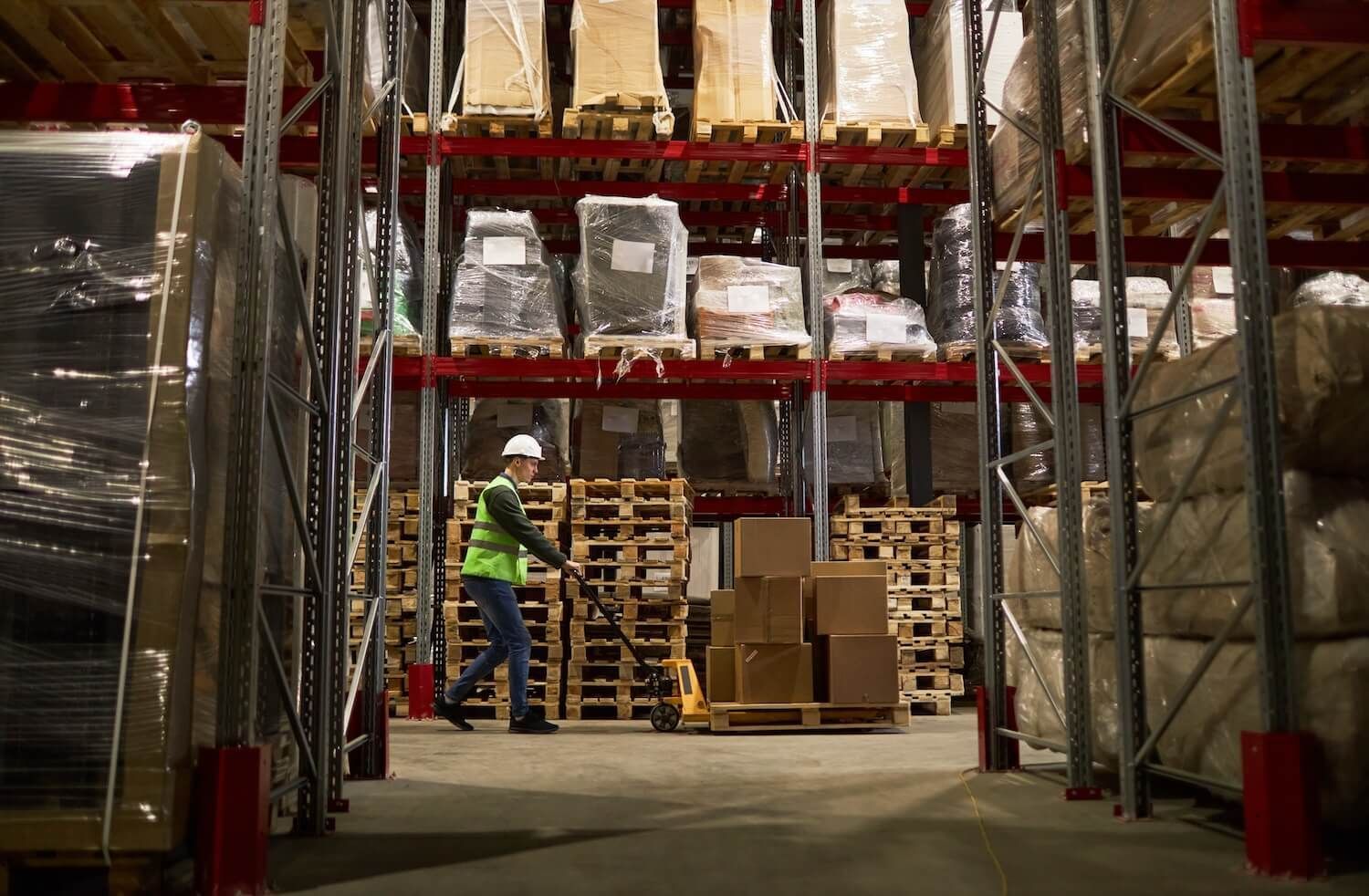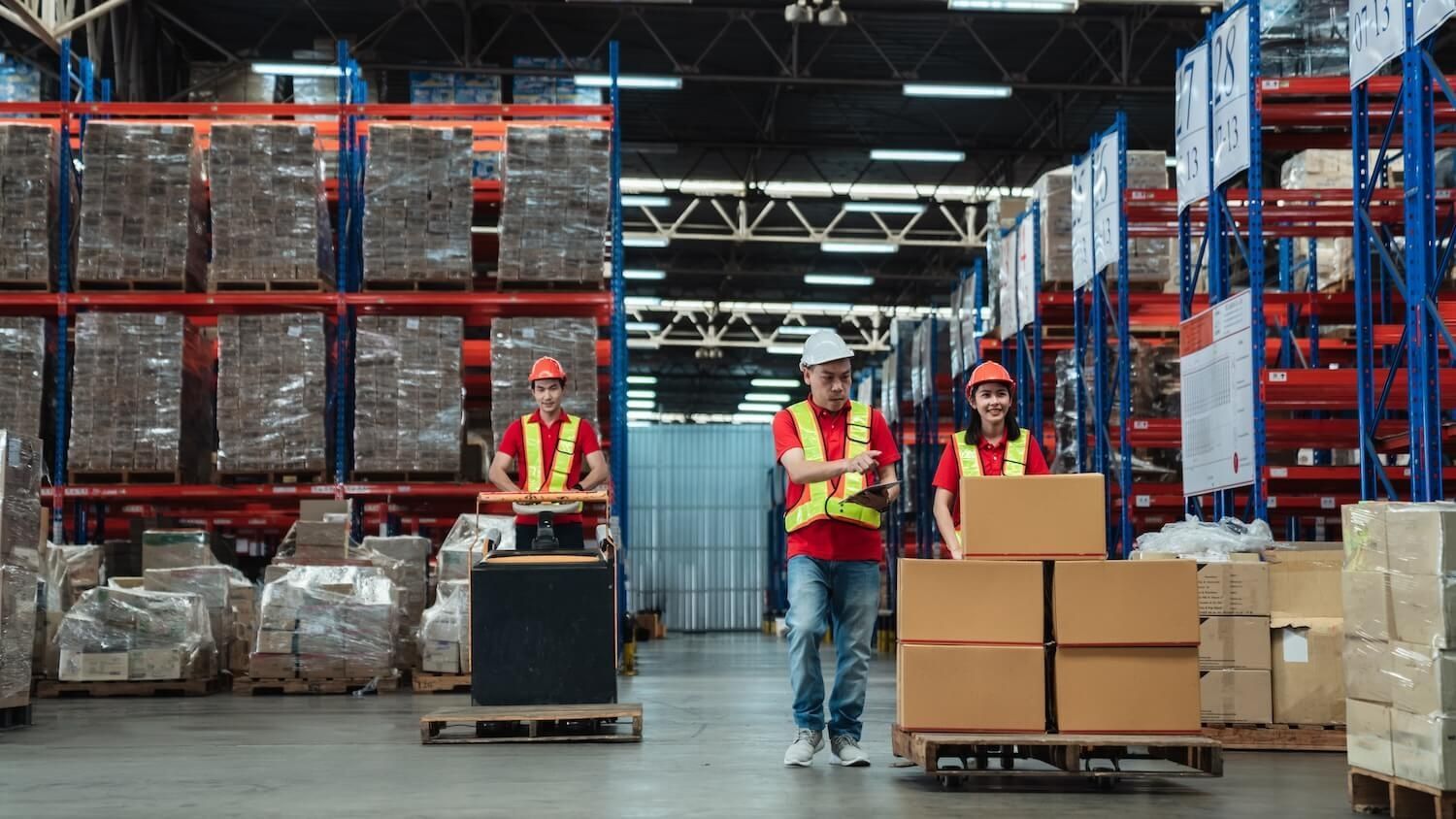On-Demand & Commercial Warehousing: How to Future-Proof Your Business

The air in the logistics hub crackles with a familiar tension. News headlines paint a picture of escalating geopolitical complexities, unpredictable weather patterns disrupting shipping lanes, and consumer behavior shifting with the speed of social media trends. For businesses navigating this intricate web of variables, the warehouse, once a predictable cornerstone of operations, can feel like a linchpin under constant strain. The challenge isn't just about storing goods anymore; it's about building a dynamic, responsive infrastructure capable of weathering any storm.
Consider the myriad pressures businesses face daily. A sudden surge in demand following a successful marketing campaign can overwhelm existing storage capacity. Unexpected delays in raw material shipments can lead to inventory pile-ups. The need to penetrate new geographic markets requires the strategic positioning of goods closer to customers. In such a fluid environment, clinging to a static warehousing strategy is akin to navigating a tempest in a fixed-keel vessel, stability becomes rigidity, and the inability to adapt becomes a critical vulnerability.
For too long, the warehousing conversation has revolved around a seemingly binary choice: the consistent commitment of long-term commercial leases or the reactive scramble for short-term solutions. Neither extreme fully addresses the nuanced realities of modern commerce. Commercial warehousing, while offering foundational stability, can become a financial anchor during slower periods, locking businesses into paying for unused space. Conversely, relying solely on ad-hoc, short-term fixes often lacks the strategic integration and consistent processes required for sustained efficiency and control.
Envision a more empowered future. Picture your supply chain seamlessly absorbing peak season volumes without a hint of strain. Imagine your business confidently expanding into new territories, leveraging strategically located storage without the burden of long-term commitments. Consider the ability to optimize inventory placement in real-time, minimizing transit times, and maximizing customer satisfaction. This isn't an unattainable vision; it's the tangible outcome of strategically integrating on-demand and commercial warehousing – a transformative approach that equips your business not just to survive, but to thrive in an era of relentless change.
Deconstructing the Modern Storage Warehousing Dilemma
The evolving demands of the global marketplace have fundamentally altered the role and requirements of warehousing.
The Inadequacies of Singular Warehousing Strategies
Depending exclusively on either commercial or short-term warehousing models presents distinct limitations in today's dynamic landscape:
- The Static Nature of Commercial Warehousing:
- Financial Inflexibility: Long-term leases can tie up significant capital and result in wasted expenditure during periods of low demand.
- Limited Agility: Scaling operations up or down in response to rapid market changes can be a slow and cumbersome process.
- Suboptimal Geographic Reach: A fixed warehouse location may not efficiently serve a geographically diverse customer base, leading to higher transportation costs and longer delivery times.
- The Fragmented Reality of Short-Term Solutions:
- Lack of Systemic Integration: Ad-hoc warehousing often operates outside of core systems, leading to data silos and operational inefficiencies.
- Increased Costs and Uncertainty: Short-term space can be significantly more expensive, particularly during peak seasons, and availability can be unpredictable.
- Inconsistent Service Levels: The quality and reliability of short-term warehousing can vary widely, potentially impacting operational efficiency and customer satisfaction.
The Imperative for a Hybrid Warehousing Ecosystem
The complexities and volatility of the modern business environment necessitate a more sophisticated and adaptable warehousing strategy. The optimal solution lies in the strategic orchestration of a hybrid model, leveraging the complementary strengths of both commercial and on-demand warehousing.
Unlocking Strategic Advantage Through Integrated Warehousing Storage
A future-proof warehousing strategy isn't about choosing one model over the other; it's about creating a synergistic ecosystem where stability and flexibility work in concert to enhance resilience and drive efficiency.
Commercial Warehousing: The Anchor of Operational Excellence
Commercial warehousing forms the stable core of your logistics infrastructure, providing:
- A Foundation for Core Inventory: Offers a dedicated, controlled environment for your primary inventory, enabling optimized organization and established workflows.
- Predictable Baseline Costs: Long-term leases provide a predictable cost structure for your consistent storage needs, facilitating accurate financial planning.
- Cultivation of Specialized Expertise: Allows for the development of in-house teams with deep knowledge of your specific products and operational requirements.
On-Demand Warehousing: The Catalyst for Agility and Growth
On-demand warehousing acts as the dynamic extension of your storage capabilities, offering:
- Scalable Capacity for Peak Fluctuations: Provides the ability to seamlessly access additional storage space during periods of high demand, ensuring uninterrupted order fulfillment.
- Responsive Adaptation to Market Dynamics: Enables swift adjustments to inventory levels and placement in response to unexpected market shifts or supply chain disruptions.
- Strategic Market Penetration: Facilitates cost-effective entry into new geographic markets by providing localized storage without the commitment of long-term leases.
- Optimized Inventory Distribution: Allows for the strategic positioning of inventory closer to end customers, reducing transportation costs and accelerating delivery times.
- Enhanced Risk Mitigation: Diversifying your warehousing footprint across multiple locations reduces your reliance on a single facility, minimizing the impact of localized disruptions such as natural disasters or regional lockdowns.

Crafting Your Future-Proof Warehousing Inventory Blueprint
Implementing an integrated on-demand and commercial warehousing strategy requires a structured and strategic approach:
Phase 1: In-Depth Needs Assessment and Forecasting
- Detailed Historical Data Analysis: Scrutinize past sales figures, seasonal trends, promotional impacts, and supply chain variability to understand your unique demand patterns.
- Robust Future Demand Forecasting: Employ sophisticated forecasting models to project anticipated growth, potential market shifts, and the impact of strategic initiatives.
- Segmentation of Storage Requirements: Differentiate between your core, consistent storage needs and your variable, peak-related, or geographically specific requirements.
Phase 2: Comprehensive Evaluation of Existing Infrastructure
- Critical Assessment of Current Commercial Leases: Analyze the cost-effectiveness and utilization rates of your existing commercial warehouse space. Identify any underutilized or overutilized areas and evaluate the flexibility of your current lease agreements.
- Identification of Logistical Bottlenecks: Pinpoint any current limitations or inefficiencies within your existing warehousing operations that could be addressed by a more flexible approach.
Phase 3: Strategic Partner Selection for On-Demand Warehousing
- Rigorous Vetting of Potential Providers: Conduct thorough research on on-demand warehousing providers, evaluating their network reach, service offerings, technology capabilities, and pricing structures.
- Emphasis on Service Level Agreements (SLAs): Carefully review and negotiate SLAs to ensure the provider can meet your specific operational requirements and performance expectations.
- Focus on Technology Integration Capabilities: Prioritize providers whose technology platforms can seamlessly integrate with your existing WMS, enterprise resource planning (ERP) systems, and transportation management systems (TMS).
Phase 4: Development of a Dynamic Inventory Allocation Strategy
- Establishment of Clear Allocation Rules: Define specific criteria and triggers for utilizing on-demand warehousing, such as exceeding pre-defined inventory thresholds, approaching peak seasons, or expanding into new geographic regions.
- Creation of Streamlined Transfer Processes: Develop efficient and cost-effective procedures for transferring inventory between your commercial and on-demand facilities.
Phase 5: Seamless Technology Integration for End-to-End Visibility
- Implementation of a Unified Warehouse Management System (WMS): Deploy a WMS that provides a single, comprehensive view of your inventory across all warehousing locations, enabling real-time tracking and management.
- Ensuring Data Transparency and Accessibility: Establish robust data integration processes to ensure that critical inventory and operational data are readily accessible across your entire supply chain.
Phase 6: Cultivating Robust Communication and Collaborative Frameworks
- Establishment of Clear Communication Channels: Define clear lines of communication and reporting structures between your internal logistics teams and your on-demand warehousing partners.
- Fostering Collaborative Partnerships: Build strong, collaborative relationships with your on-demand providers based on mutual trust and shared objectives.
Phase 7: Continuous Monitoring, Analysis, and Optimization
- Tracking Key Performance Indicators (KPIs): Regularly monitor critical metrics such as storage costs, order fulfillment times, inventory accuracy, and transportation expenses across your entire warehousing network.
- Data-Driven Decision Making: Utilize data analytics to identify areas for improvement and optimize your integrated warehousing strategy over time.
- Regular Strategy Review and Adaptation: Periodically reassess your warehousing needs and the effectiveness of your integrated approach in light of evolving market conditions and business objectives.
The Transformative Power of Warehouse Fulfillment Agility
Adopting an integrated on-demand and commercial warehousing strategy transcends mere storage optimization; it unlocks significant strategic advantages in today's volatile marketplace:
- Unwavering Supply Chain Resilience: The ability to rapidly adapt to disruptions, whether they be demand surges, supply chain bottlenecks, or unforeseen events, minimizes operational impact and safeguards customer satisfaction.
- Optimized Total Landed Costs: Strategic utilization of on-demand warehousing for peak needs and geographically specific inventory placement reduces overall storage and transportation expenses.
- Enhanced Customer Experience: Meeting fluctuating demand effectively ensures timely order fulfillment, minimizes stockouts, and enables faster delivery times, leading to increased customer loyalty and positive brand perception.
- Sustainable and Scalable Growth: The flexibility to efficiently scale warehousing capacity without significant capital expenditure empowers businesses to pursue growth opportunities with greater confidence and agility.
Embracing the Future of Warehousing: A Call to Strategic Action
In an era defined by constant change and unforeseen challenges, a static, inflexible warehousing strategy is no longer a viable path to long-term success. The future belongs to businesses that embrace agility, adaptability, and strategic integration. By thoughtfully combining the foundational stability of commercial warehousing with the dynamic flexibility of on-demand solutions, you can forge an unbreakable supply chain capable of navigating any uncertainty and capitalizing on emerging opportunities.
Don't let outdated warehousing models hold your business back. Take the first step towards a future-proof supply chain. Contact Razr Logistics today to explore how our integrated on-demand warehousing solutions can empower your business to thrive in the face of tomorrow's challenges.












 by
by